Introduction - What Is a Continent?
Today, we'll discuss the fictional continent of Alula, so, first, let's see what a continent is and how it is formed. By definition, a continent is a large mass of land surrounded by water. Considering salt water covers around 75% of the surface of the Earth, there are many extensive, continuous territories everywhere. Treating these large territories as merely islands would be quite inefficient, so that's why we, humankind, created the concept of "continents".
Actually, the way geographers outline a continental mass is quite interesting. They use different criteria for each case; physical, cultural, political, and even historical. I was unaware of this before I started writing this article, so I actually learned something as I researched continents!
Well, now that we know how a continent is formed, let's discover Alula with Faraway, the board game!
Game Info
Faraway is best played with 2 to 6 players, for ages 10 and up, designed by Johannes Goupy and Corentin Lebrat. It was beautifully illustrated by Maxime Morin.
Here's some trivia for you: if you're color-blind, you'll still be able to play this game without any issues. The game pieces feature different colors and different illustrations as well, so you'll easily be able to set them apart regardless of their color.
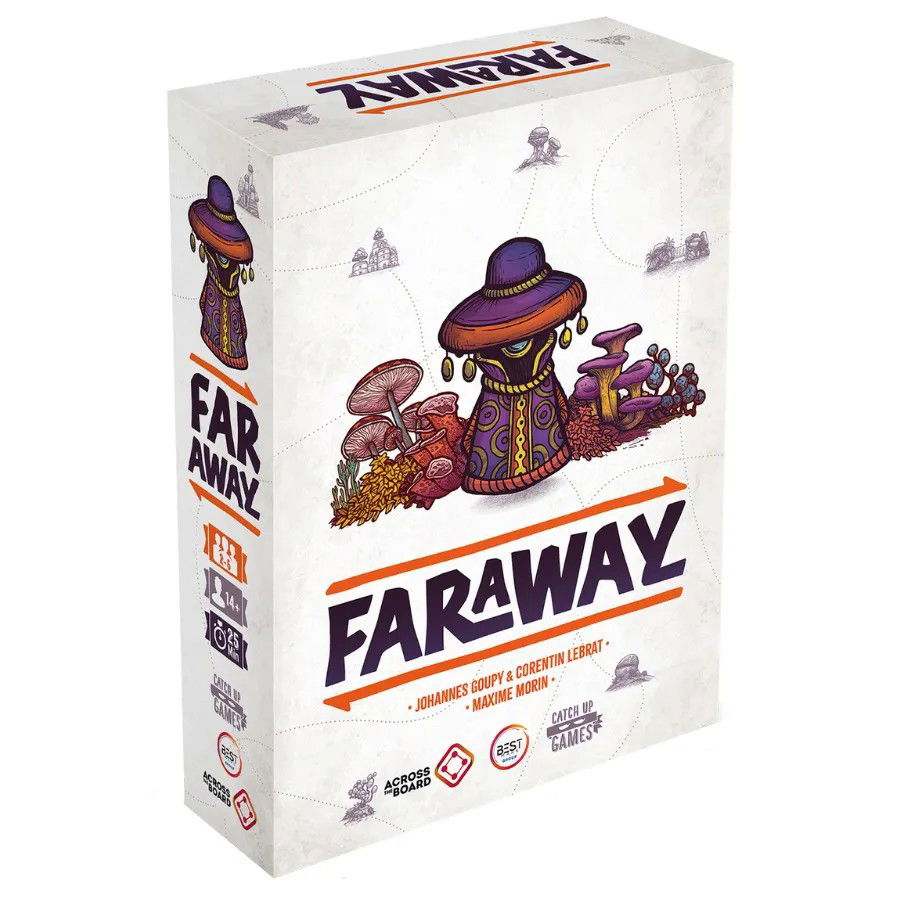
Faraway was released in 2023 by Catch Up Games, and by 2024 it had been released worldwide. Its base mechanics are: open drafting, contracts, simultaneous action selection, and set collection.
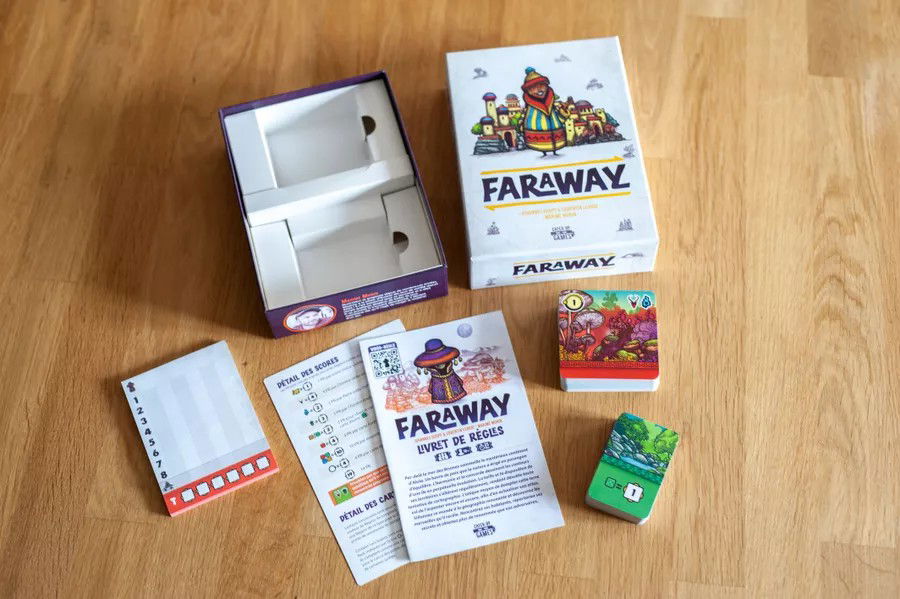
It was also nominated for many prizes when it was released, in 2023. It was nominated to Golden Geek's Most Innovative Board Game and Light Game of the Year awards, for instance. In 2024, it was nominated and won As d'Or's Game of the Year award.
Let's go!
The Game
Alula's geography changes constantly according to the seasons. Discovering its secrets, meeting its people, and experiencing its marvels are the true challenges.
Alula's inhabitants are sedentary because they believe this helps maintain the balance of the island through all of these constant geographical changes. It also helps them monitor where everything is. They welcome explorers warmly, as they map Alula and keep them updated.
This time, we're the explorers. Who can map Alula more accurately? That's what we'll find out.
At the beginning of the game, we'll get 3 Region cards. These cards contain information about which time of day we are supposed to explore that certain region (night or day), how much time we'll take exploring it, and what we'll find in it in terms of biome and natural species. They all give you points according to these details and this is crucial for your strategy.
As I mentioned earlier, color-blind people will have no trouble reading these cards and playing the game in general. That's because each color features a different pattern, so Region and Sanctuary cards are very easy to understand.
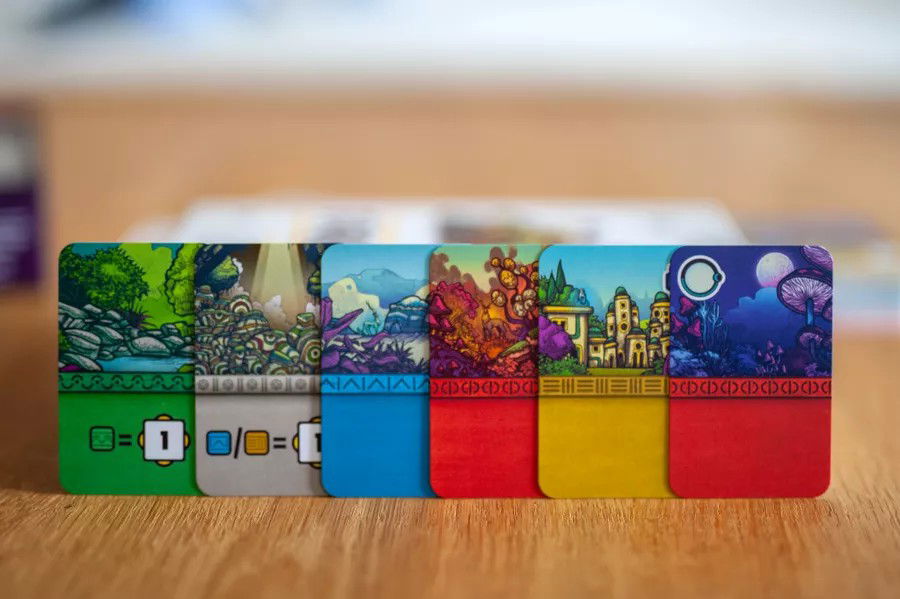
After everyone gets these 3 initial cards, all players play simultaneously the same turn, and it's really simple. Check it out:
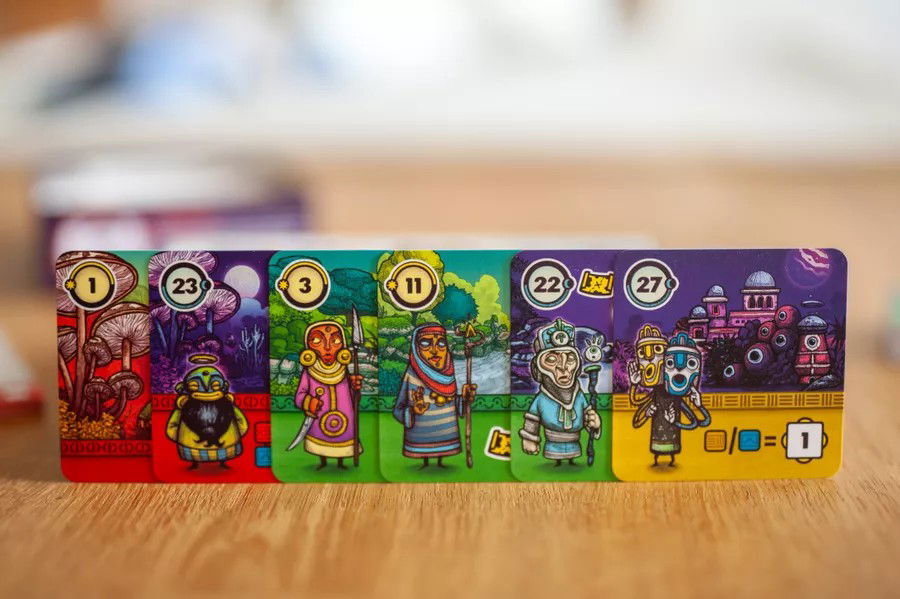
There are cards that give you points when you explore regions at night, and others that give you points when you explore regions during the day. To find a Sanctuary, you'll need to set up a strategy around exploration duration. We'll explain this later on.
Region cards also represent each Alula biome:
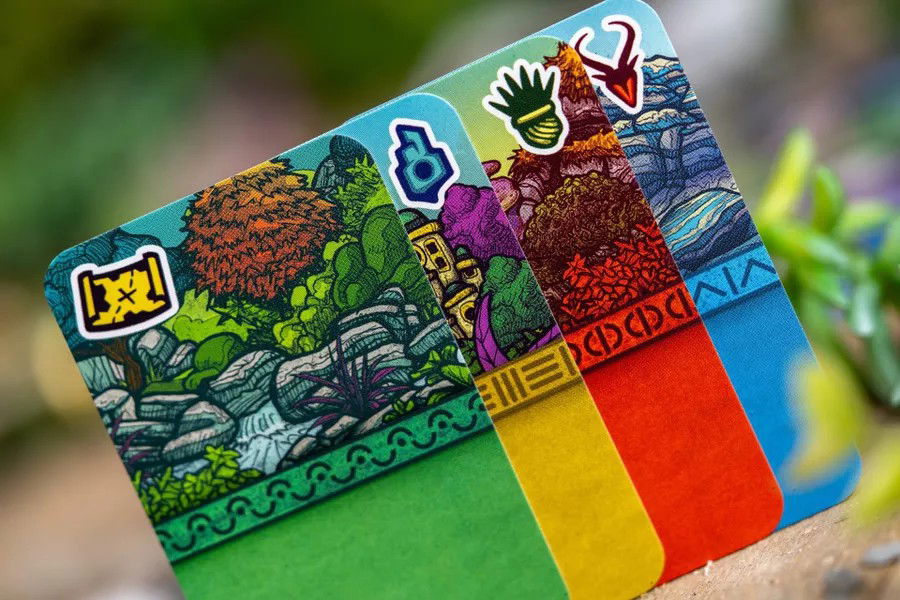
In some cards, these biomes give you points, so that's why they're relevant. You can also find different types of resources on Region cards, and they give you points as well:
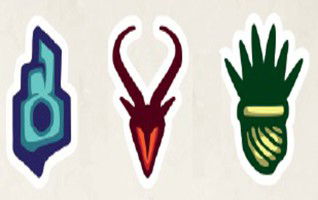
They're all rare species, and give you many points.
Let's move on to what makes Faraway shine: its inverted scoring system. In the first part of your turn, when you explore a region and play a Region card from your hand, you must take many factors into account.
As everyone starts with 3 cards, you'll know what you can explore, which of your cards give you more points when you explore certain biomes, and much more. For instance, some give you more points if you explore at night, others, when you explore during the day. Some give you more points according to the different resources you get.
Everyone gets 8 turns to explore, so you'll play 8 cards in sequence, one per turn, and build a timeline.
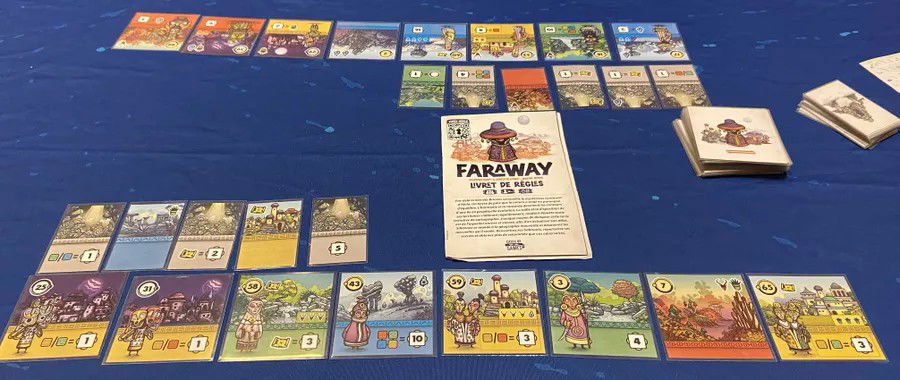
The picture above shows a timeline with multiple explorations. However, you'll count points from right to left, that is, in the other direction. Please note that, ideally, you'll play the cards that give you more points as soon as you start exploring, so they'll be on the left. You should play the other Region cards (the ones that give you the resources you need to get even more points) on the right. This way, when you start counting your score, you'll get the resources from the cards on the right first, and then use them to get even more points with the cards on the left.
To sum up: you'll explore, discover whatever you can, and then come back and count your score as well as everything you've discovered.
After you play a Region card with this strategy, from the second turn onward, that is, when you play your second Region card, you'll be able to find a Sanctuary. To find it, you'll need to play Region card with an exploration duration higher than the Region card you just played. You'll only find a Sanctuary, or, better yet, get a Sanctuary card, once you start going on longer explorations.
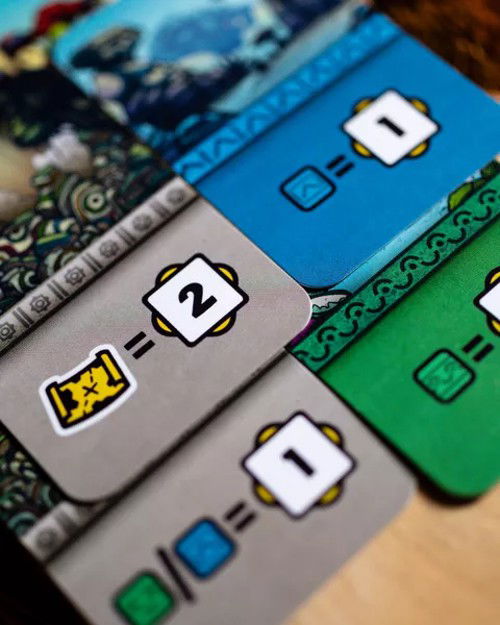
Finally, it's time to end the exploration, which is when you'll refill your hand with another Region card to have 3 Region cards in hand once again. However, it is not that simple, and there's a lot of strategy involved in this step. There's a common area with Region cards that are available to all explorers, but the one who spent less time exploring goes first. This goes on until everyone gets their Region card.
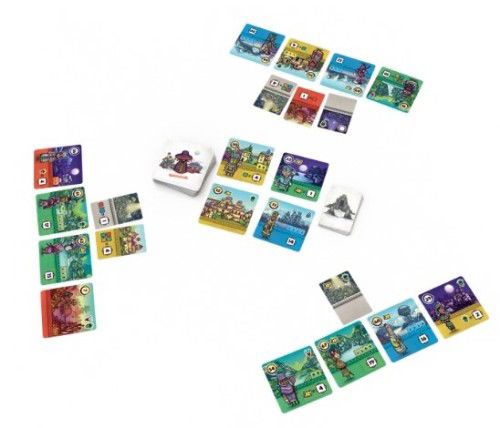
Please note that you need to go on longer explorations to get Sanctuary cards, but you'll also need to be fast when you explore so you're the first to pick a Region card later. That's one of the ways you'll be able to get better Region cards. You'll have to balance everything! By the way, the total time you've spent exploring can even define who wins. It's pure strategy!
This is basically a Faraway turn.
End of the Match
The match ends at the end of the 8th round. Then, it's time to count your discoveries.
Turn all the Region cards on your exploration timeline face down, that is, keep them "closed", then turn the last one, on the right, face-up.
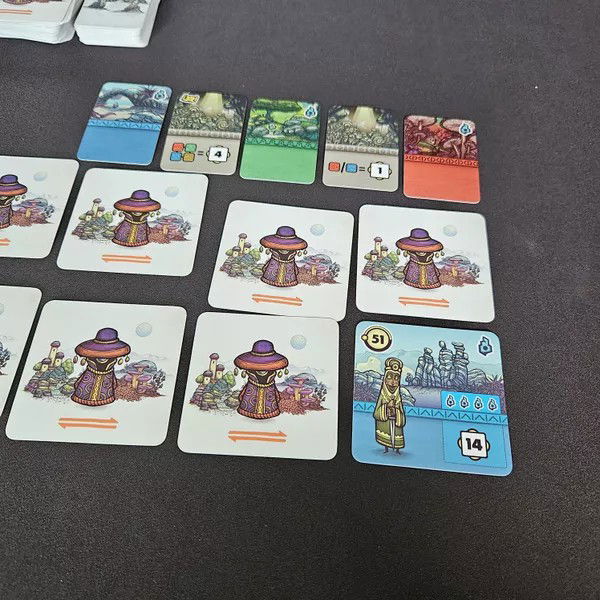
Count the types of biomes you explored, the resources you got, and your daytime and nighttime explorations as you turn each Region card face up, including your Sanctuary cards. This is how you'll check if you met the conditions on the Region cards on the left and count how many points you got from doing so. After you count all 8 Region cards, it's time to count your Sanctuary cards.
Whoever gets more points wins. If there is a tie, the tied player with the lowest
exploration duration in their tableau wins the game.
It's that simple!
Strategy Tips
The first and most valuable tip I can give you is: pick the card that gives you more points, that is, the one who requires more resources, and start with that one. That's it. This will be a double-edged sword because, while you'll be placing the right card in the right place, that is, on the right, your strategy will be clear to all other explorers. To sum up, targeting you will be easy. But that's Faraway!
Invest in Sanctuary cards. You'll have to consider how long you'll explore each place, which also demands a lot of strategy; you'll notice that the cards that give you more points and thus should be played on the left are the ones that take longer to explore. Afterward, playing cards that take less to explore and thus get you Sanctuary cards, will not be easy.
This is what I recommend: after you play your first or second Exploration card, play Exploration cards that take less to explore, even if they don't offer you many resources. Afterward, any card you play will take longer to explore and give you Sanctuary cards.
To get resources, you'll have to use logic. First, you need to determine the resources you need. You'll only be able to get them after you decide that.
Unboxing, Rules, and Gameplay Videos
Check out this unboxing:
Learn the rules:
Watch some gameplay:
Teaching Moments
If you want to improve your logic skills as well as create new strategies, Faraway is the game for you!
This game will make you, at the very least, curious and excited - after all, you'll be exploring a continent that is so different from what we're used to: its animals, plant life, and minerals are so incredibly different, and its people are fascinating. This game was beautifully illustrated as well, so you won't be able to take your eyes off it.
Faraway will glue you to your chair for these and many other reasons. It is unlike anything you've ever seen, but it will still motivate you to work on your logic skills. It is an excellent game to work on your attention span as well.
Because of the scoring system, you'll have to pay attention to the game at all times, even more so considering you can "lock down" other players by getting the Exploration and Sanctuary cards they wanted. You'll experience many fun moments with friends and family when you play this game, so enjoy!
Together, you'll learn what is the best strategy and discover the most logical decisions you can make, all while having a lot of fun.
Faraway is a very entertaining lesson in logic and strategy!
I highly recommend Faraway for your collection!









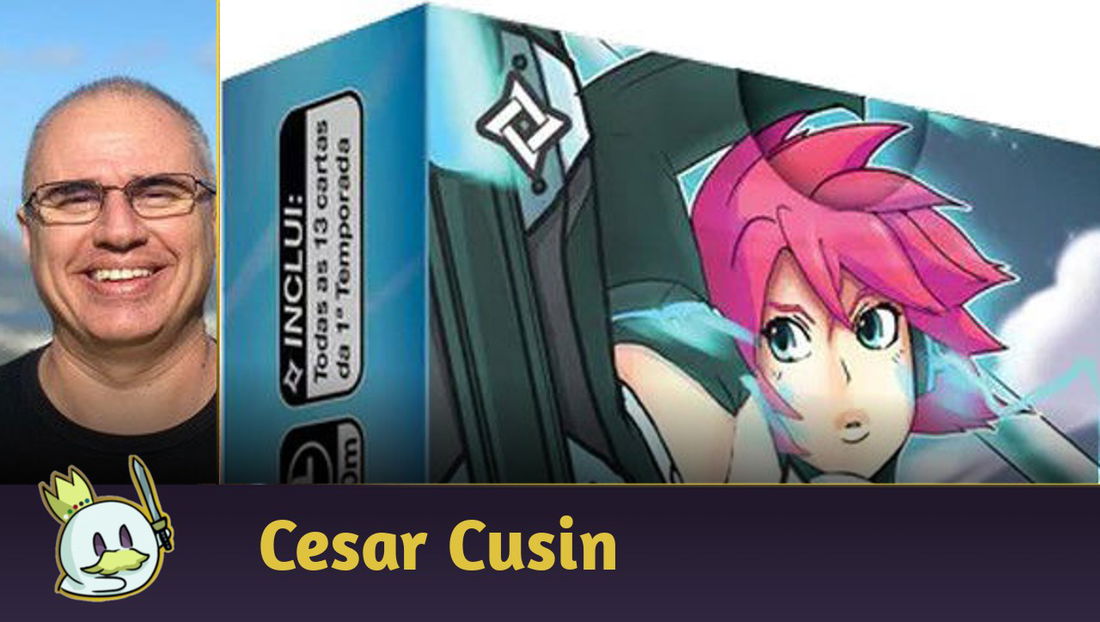
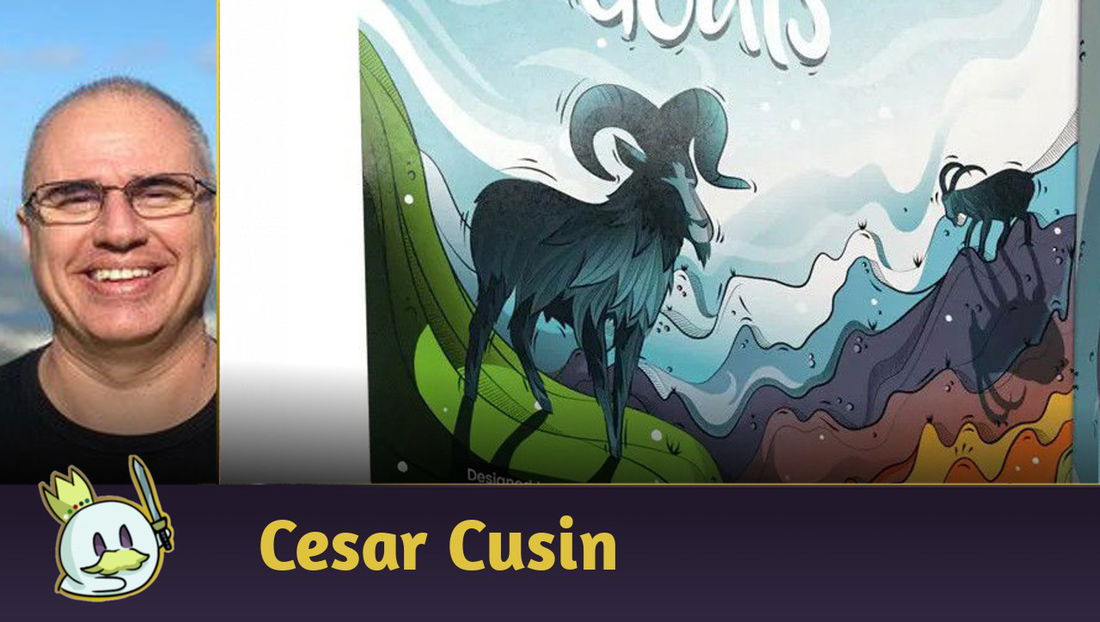



— Comments 0
, Reactions 1
Be the first to comment